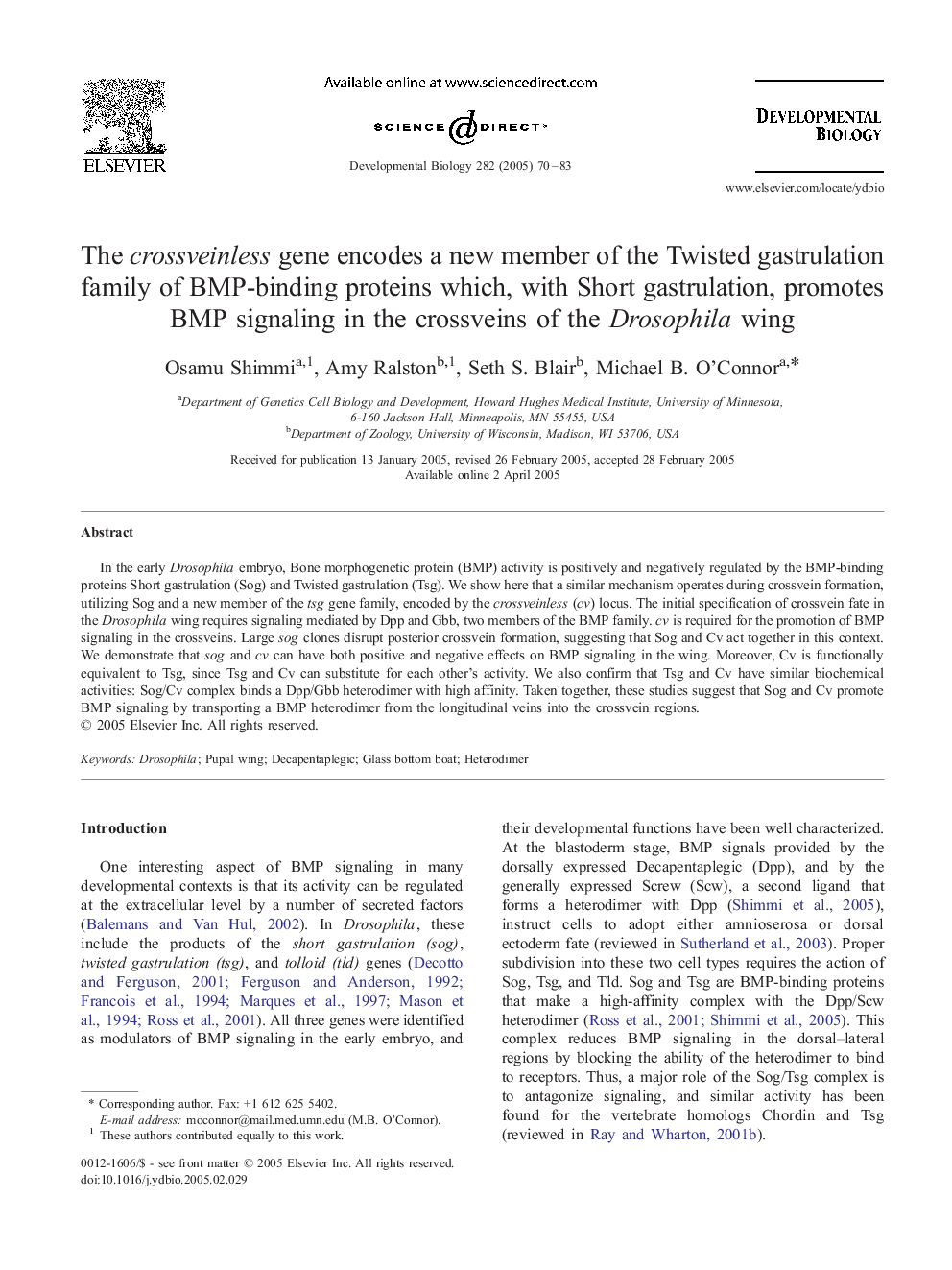| Article ID | Journal | Published Year | Pages | File Type |
|---|---|---|---|---|
| 10933879 | Developmental Biology | 2005 | 14 Pages |
Abstract
In the early Drosophila embryo, Bone morphogenetic protein (BMP) activity is positively and negatively regulated by the BMP-binding proteins Short gastrulation (Sog) and Twisted gastrulation (Tsg). We show here that a similar mechanism operates during crossvein formation, utilizing Sog and a new member of the tsg gene family, encoded by the crossveinless (cv) locus. The initial specification of crossvein fate in the Drosophila wing requires signaling mediated by Dpp and Gbb, two members of the BMP family. cv is required for the promotion of BMP signaling in the crossveins. Large sog clones disrupt posterior crossvein formation, suggesting that Sog and Cv act together in this context. We demonstrate that sog and cv can have both positive and negative effects on BMP signaling in the wing. Moreover, Cv is functionally equivalent to Tsg, since Tsg and Cv can substitute for each other's activity. We also confirm that Tsg and Cv have similar biochemical activities: Sog/Cv complex binds a Dpp/Gbb heterodimer with high affinity. Taken together, these studies suggest that Sog and Cv promote BMP signaling by transporting a BMP heterodimer from the longitudinal veins into the crossvein regions.
Keywords
Related Topics
Life Sciences
Biochemistry, Genetics and Molecular Biology
Cell Biology
Authors
Osamu Shimmi, Amy Ralston, Seth S. Blair, Michael B. O'Connor,
